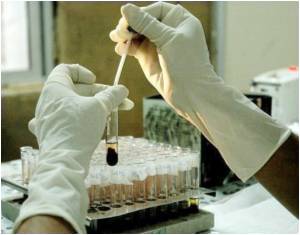At the University of Massachusetts Amherst, chemical analyses by neuroscientist Jerrold Meyer and colleagues are helping to establish hair cortisol concentration (HCC) as an important new biomarker for stress in wild animals facing global climate change.

Last year, an international research team led by Danish bioscientist Thea Bechshøft of Aarhus University reported that fluctuations in climate and ice cover are closely related to stress among polar bears in East Greenland as indicated by levels of the stress hormone cortisol in hair samples measured in Meyer's UMass Amherst laboratory. He says, "We are very hopeful that researchers around the world will discover the usefulness of this type of analysis once they learn that it can now be done with much greater reliably than before."
"Nobody else has done this so far," adds Meyer, a behavioral endocrinologist. "We've not only been one of the key developers of the technique but we have also have worked very hard to demonstrate its reliability and validity. In collaboration with Melinda Novak, chair of the psychology department, we were among the first to show in a major controlled study that a prolonged or major life stress does lead to a demonstrable increase in cortisol in hair. Now we're making the technique available to others and we hope it spurs new collaborations with our lab."
Meyer's assay core laboratory is expert in measuring not only cortisol concentrations, but also progesterone, testosterone and oxytocin levels in a variety of sample types including hair, blood, saliva and cerebrospinal fluid. His major research area is in behavioral endocrinology, and in exploring "how these modern techniques can be used to get exciting new insights into the relationship between the endocrine system and behavior in animal research and human studies."
Over the past 40 years, Meyer says techniques have become not only much more sensitive and precise, but safer for researchers as they have been able to move away from using radioactive substances. "We can now measure much lower levels of substances than we could when I was a grad student," he recalls. "And with new enzyme immunoassay techniques read by a microplate reader, the work has become not only safer for researchers, but for lab workers and the environment."
To analyze cortisol levels in hair, the researchers need a sample about 3 cm long and weighing about 5 mg, that is, 10 or 12 strands. In humans, this amount cut from the scalp outward represents about three months of hormone activity as human hair grows an average 3 cm per month, Meyer notes. In his UMass Amherst lab about six undergraduates are currently learning the exacting techniques for washing and drying samples, grinding them to powder, extracting the cortisol, and conducting the enzyme immunoassay.
Advertisement
"We have analyzed this hormone in several blind samples of polar bear hair from museum specimens that were killed and stuffed in the late 1800s, and we had no trouble measuring it 125 years later," he says. "Others have measured cortisol concentrations in Peruvian mummies 1,500 years old. It's one of the beauties of hair cortisol, you can measure it in archival specimens."
Advertisement














